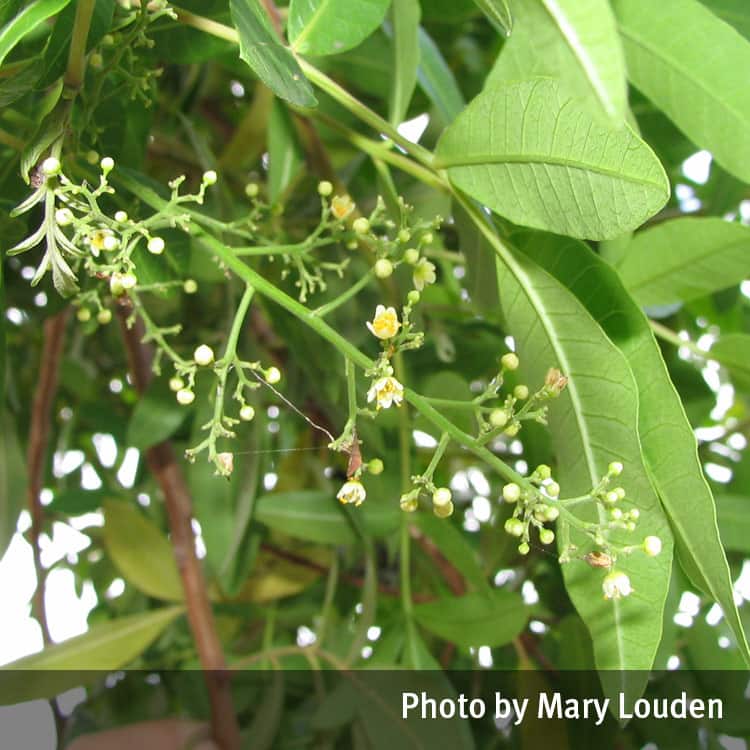Warning
For all eye exposures rinse the eye with water for 15 minutes and then seek urgent medical assistance.
Description
A small tree which grows up to 6m tall, sometimes up to 16m, previously planted as a garden ornamental, but now a weed in coastal areas. The tree is quite resinous and aromatic, especially when the leaves are crushed.
The flowers are small and white, with petals about 2mm long, and occur in massed inflorescences.
The leaves consist of 5 to 9 leaflets opposite to each other. The leaflets are 3 to 8cm long and 1.5 to 3.5cm wide.
Toxicity
Symptoms
If berries are eaten they may cause vomiting and diarrhoea. The sap may cause dermatitis and eye irritation. When flowering, the tree may cause sneezing, asthma-like reactions and headache.
Images


Details
Common name: Brazilian pepper tree
Botanical name: Schinus terebinthifolius
Other common names: Broad-leaved pepper tree
Family: Anacardiaceae
General description: A small tree which grows up to 6m tall, sometimes up to 16m, previously planted as a garden ornamental, but now a weed in coastal areas. The tree is quite resinous and aromatic, especially when the leaves are crushed.
Flowers: The flowers are small and white, with petals about 2mm long, and occur in massed inflorescences.
Leaves: The leaves consist of 5 to 9 leaflets opposite to each other. The leaflets are 3 to 8cm long and 1.5 to 3.5cm wide.
Fruit/Berries: The fruits are bright red, shiny berries, rounded in shape, about 6mm in diameter.
Other: The sap is clear and sticky. Schinus terebinthifolius is a restricted (category 3) species under Queensland’s Biosecurity Act 2014.